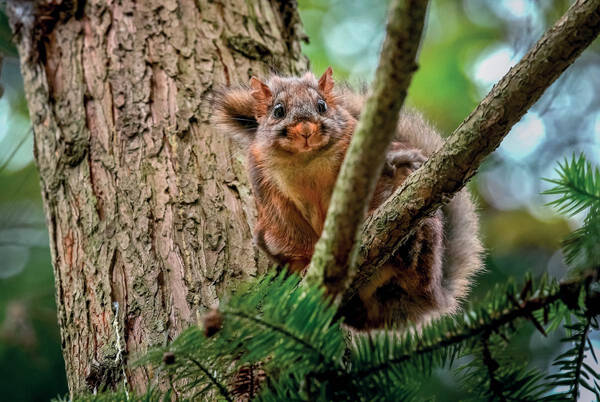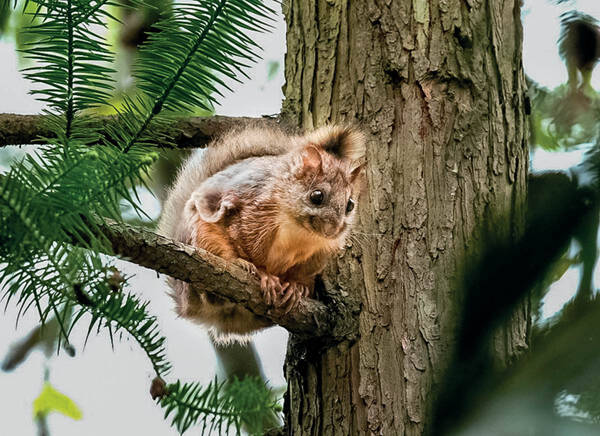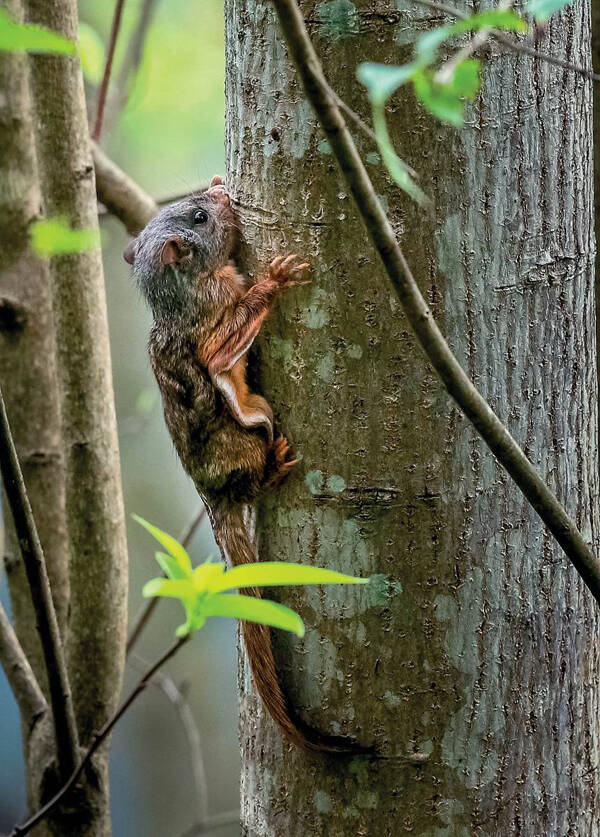Trogopterus xanthipes
IUCN
LCBasic Information
Scientific classification
- name:Trogopterus xanthipes
- Scientific Name:Trogopterus xanthipes,Orange-footed flying squirrel, yellow-footed flying squirrel, cuckoo bird, cuckoo bug, cuckoo bug, magpie
- Outline:Rodents
- Family:Rodentia Sciuridae F.Squirrel
Vital signs
- length:300-340mm
- Weight:300-400g
- lifetime:10+ years
Feature
It has a medium body size, a slightly flat tail that is as long as the body, a round head with big eyes, a short snout, and well-developed, round and wide ears.
Distribution and Habitat
The flying squirrel is endemic to China. It is distributed in Beijing, Hebei, Henan, Shanxi, Shaanxi, Gansu, Qinghai, Hubei, Guizhou, Yunnan, Sichuan, Chongqing, Tibet and other places.
This species usually lives alone in coniferous forests or mixed coniferous and broad-leaved forests in temperate and subalpine areas. It usually nests in tree holes and is nocturnal.
Appearance
The snout is relatively short. The snout, wing membranes and dorsum of the feet are yellow-brown. The forehead is gray and the eyes are large. The ears are well developed, with long black tufts of hair inside and outside the ear base. The back hair is brown or khaki; the belly hair is yellow-white; the tail hair is mainly gray and fluffy, with long black hair at the distal end.
Details
The flying squirrel is a forest animal endemic to China. It is slightly larger than the red-bellied squirrel and lives mostly in mountain cypress forests at an altitude of about 1,200 meters. It often builds nests in steep caves, cracks in rocks, and tree holes. The nests are relatively small and are made of weeds, branches, bark, feathers, etc.

The caves or crevices where the flying squirrels live are generally narrow, about 1 meter deep and 15 to 60 centimeters high. The caves are either straight or curved, uneven, and the flying squirrels usually lie high in the caves and lay down hay. In winter, the cave entrances are often closed with firewood to keep out the wind and cold. The entire cave is dry and clean, and the temperature is moderate all year round. The highest temperature in the cave in summer is 25-27℃, the lowest temperature in winter is about 10℃, and the relative humidity of the air is mostly below 60%.
The flying squirrel is a nocturnal animal, solitary and quiet. Generally, one squirrel lives alone in one cave, and 2-3 are rarely together except during the lactation period. The flying squirrel is agile and active at night. Sometimes you can hear the call of "Li-Du Luo-Du Luo" at night. It is particularly active on moonlit nights and returns to the cave nest before dawn. When active, it alternates between climbing and gliding, and is active most frequently in the early morning and dusk. It hides in the nest to sleep during the day and leaves the nest in the evening, gliding from the cave entrance to the tree to find food. The maximum gliding distance can reach 200 m. The head is facing outward, the tail is carried on the back, covering the head, or the tail is placed under the belly, in a curled-up position. Flying squirrels are known for their habit of "defecation in one place after traveling thousands of miles for food", that is, no matter how far they go to forage, they always return to defecate in a fixed cave where they do not live.

The flying squirrel is a herbivorous animal, with leaves, bark, and kernels of cypress and Chinese pine as its main food, and kernels of peach and apricot as its main food, and it also eats leaves, bark, and fruits of other plants. When eating, it holds food with its front paws and stands still with its hind paws.
The flying squirrel breeds once a year. The estrus period is from late December to January. It takes 4 to 6 days from estrus to mating. The gestation period is 74 to 82 days (about 3 and a half months), and each litter usually has 1 to 2 pups, and occasionally 3 to 4 pups. The newborn pups are 30 to 50 mm long, weigh 20 to 80 grams, and are naked; sparse hair begins to grow after 5 days, and the eyes begin to open at 20 to 30 days; the hair grows fully at 45 days, and the weight is about 100 grams; it can leave the nest and eat plant leaves at around 90 days; it is weaned at 90 to 120 days, and the weight can reach 160 grams. The pups have their fetal hair replaced at 90 days. Those over 2 years old shed their fur twice in spring and autumn, starting from the head and moving backwards. The life span is more than 10 years.









